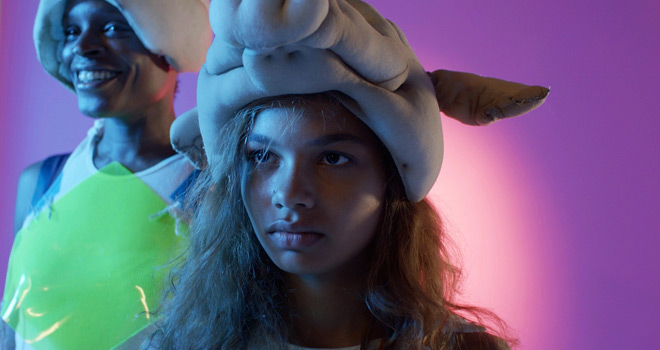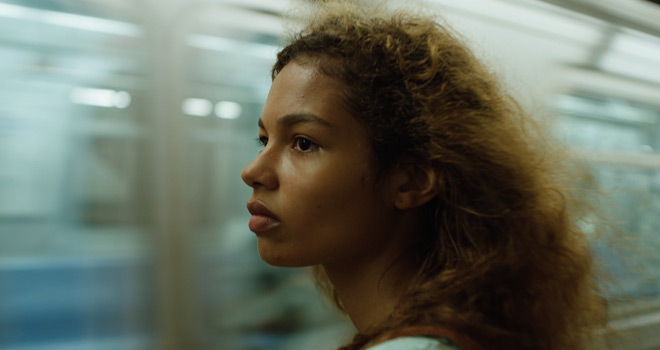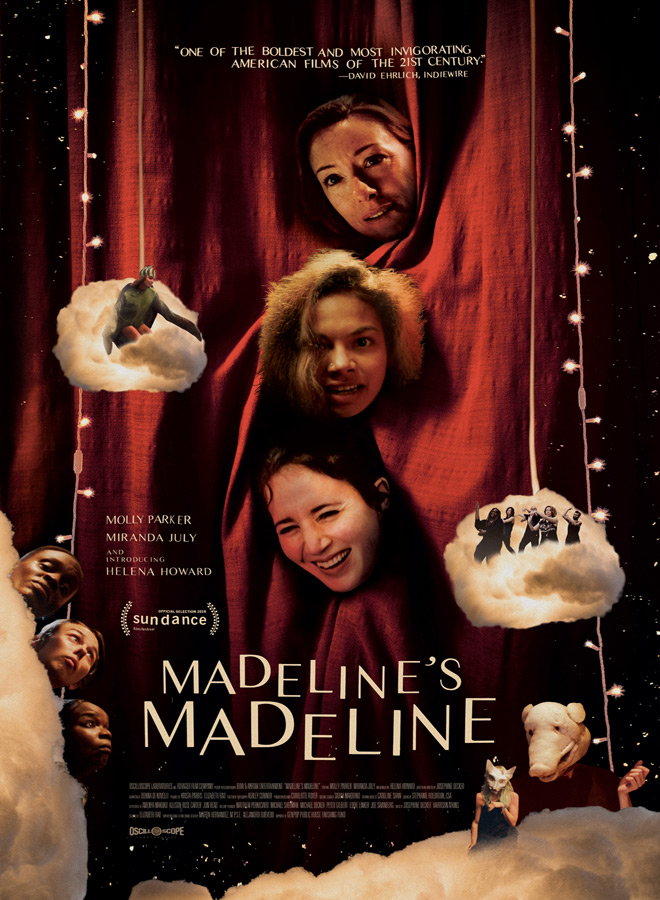Writer and Director Josephine Decker (Butter on the Latch 2014, Thou Wast Mild and Lovely 2016) is giving a new name to experimental cinema with her latest film Madeline’s Madeline. This 2018 Sundance darling is a trippy, stimulating story of a young woman struggling to cope with an unnamed mental illness as she is caught between her overprotective, single mother and an obsessive acting coach. After making the rounds at various film festivals, Madeline’s Madeline will be releasing in New York on August 10th and Los Angeles on August 17th, but with these stellar performances there is no doubt this film will find wider distribution as it begs to be discussed by movie buffs the world over.

In this sensory-overloading, expressionistic piece, viewers see Madeline, played by newcomer Helena Howard in a mind-blowing debut, who has recently become an integral part of an immersive theatre troupe led by Evangeline (Molly Parker: Trigger 2010, House of Cards series). Madeline has clearly learned to become whatever she is playing – the audience sees her crawling across the beach in a turtle costume as she embodies the animal, or prowling around her home, hissing and meowing like her beloved cat. Remember, “you are not the cat; you are inside the cat.” Soon enough, Evangeline becomes increasingly, creepily obsessed with her young protege, and the nameless production morphs to become about Madeline and her strained relationship with her mother, Regina (Miranda July: Nest of Tens 2000, Me And You and Everyone We Know 2005).
Evangeline’s obsession with Madeline and her story has all the makings of a perfect Psychological Horror. As a viewer, you will likely spend the majority of the film’s ninety minutes feeling uneasy. Not all of that has to do with Evangeline, though: Madeline’s single mother is constantly fussing over her, their relationship something of a rubber band about to snap at any moment. Though not explicitly stated, in addition to Madeline’s unnamed mental illness and her mother’s obvious anxiety, race may also play a role in straining their relationship: Regina is white and Madeline is of mixed race. Almost nothing is said about Madeline’s absent father, save that he keeps the family’s basement stuffed with graphic pornography. In one of the film’s most uncomfortable scenes, Regina catches Madeline and a group of neighborhood boys checking out their father’s collection.

Decker makes some fascinating statements about race, but like the rest of the film, the audience is left to interpret those statements. Once the audience learns that Evangeline, who is white, is pregnant and that her husband is black, her parading around of Madeline and telling her that “I dreamt you were my daughter” becomes even more sketchy. She is intent on having Madeline’s story performed, convinced that she is the one fit to tell the story of a young, mentally ill woman of color. Much of the story is between the proverbial lines, though, as Decker’s method of storytelling would never let you sit back and relax.
Just as this tale blurs the lines between genre, it also blurs traditional storytelling rules. In fact, it is even difficult to discern what the story even is, as the viewer rarely understands what is reality and what is not. Though, the movie does lay it all out at the beginning by telling the audience that this is a metaphor; “you are not the cat; you are inside the cat.” Traditional moviegoers may struggle with Decker’s storytelling techniques and stomach-turning shots, but Madeline’s Madeline is perfect for connoisseurs of “out there” filmmakers like David Lynch.

Filled with visceral visuals, shallow shots, and a discordant soundtrack, Decker’s story exists in the minutiae. By refusing to tell you a straightforward story, the audience is left to parse out what happened on their own. Though Madeline’s Madeline might be difficult to swallow for some, Howard’s performance in the role cannot be denied. She will without a doubt be launched into stardom in the coming years; her performance is the driving force behind this film, and it likely would have lacked its distinct power without her. If you get the chance, and blistering art pieces are your thing, be sure to seek out Madeline’s Madeline when it eventually reaches you. For these reasons, CrypticRock gives this film 4 out of 5 stars.






No comment